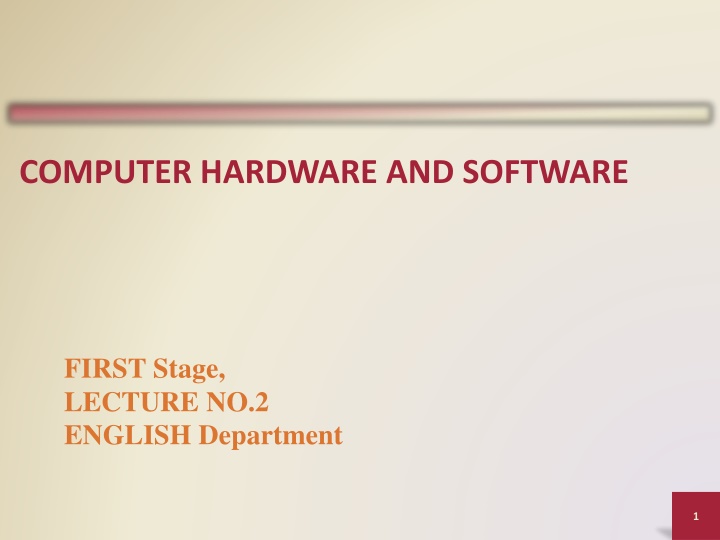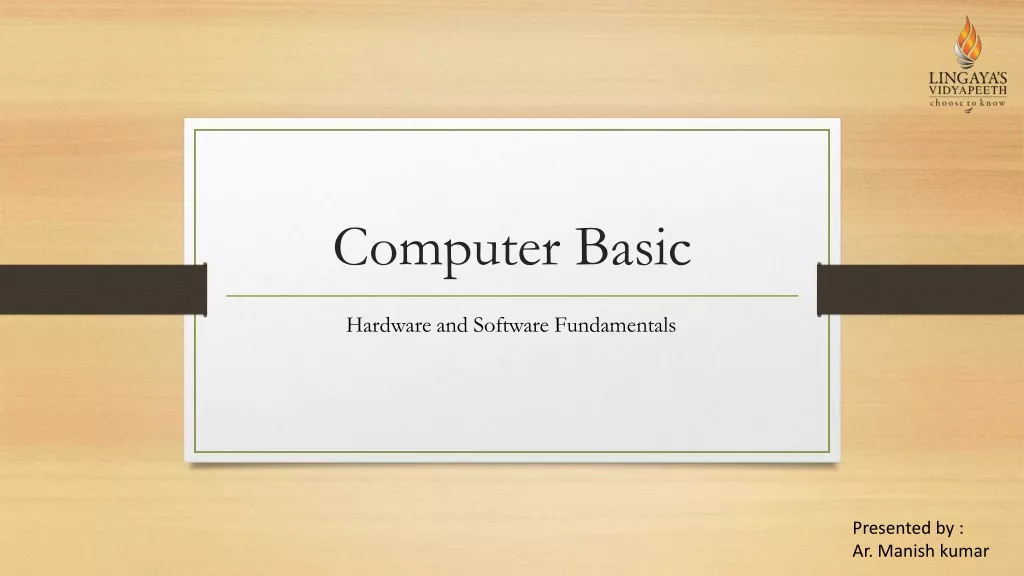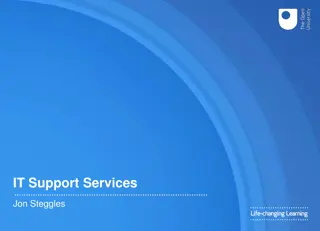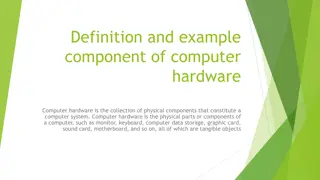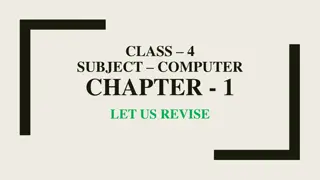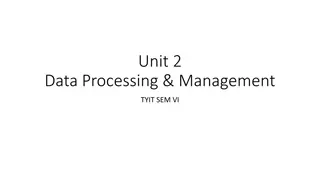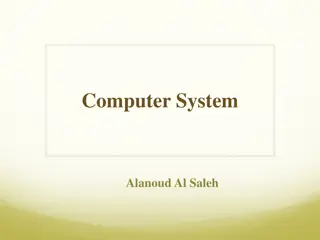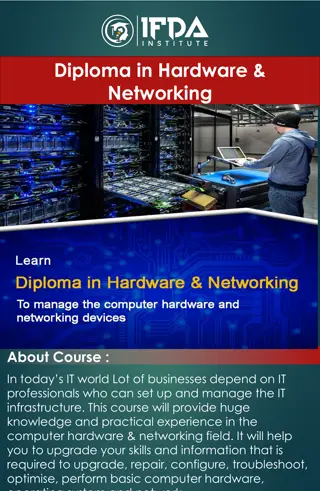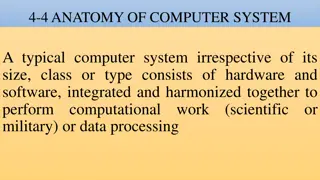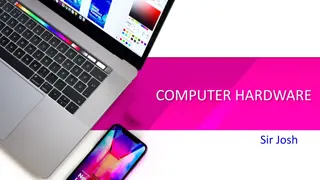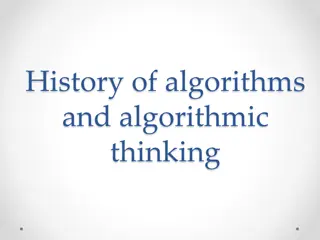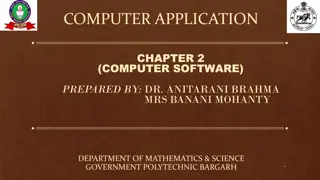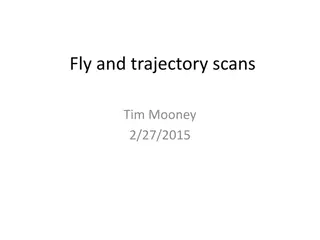COMPUTER HARDWARE AND SOFTWARE
Components of a computer system unit, including processors, memory, expansion slots, and more. Learn about data representation in digital computers using bits and bytes. Gain insights into different system unit styles and key components like the control unit and arithmetic logic unit.
Download Presentation

Please find below an Image/Link to download the presentation.
The content on the website is provided AS IS for your information and personal use only. It may not be sold, licensed, or shared on other websites without obtaining consent from the author.If you encounter any issues during the download, it is possible that the publisher has removed the file from their server.
You are allowed to download the files provided on this website for personal or commercial use, subject to the condition that they are used lawfully. All files are the property of their respective owners.
The content on the website is provided AS IS for your information and personal use only. It may not be sold, licensed, or shared on other websites without obtaining consent from the author.
E N D
Presentation Transcript
COMPUTER HARDWARE AND SOFTWARE FIRST Stage, LECTURE NO.2 ENGLISH Department 1
Objectives Overview Differentiate among various styles of system units on desktop computers, notebook computers, and mobile devices Describe the control unit and arithmetic logic unit components of a processor, and explain the four steps in a machine cycle Define a bit and describe how a series of bits represents data Differentiate between a port and a connector, and explain the differences among a USB port and other ports Describe the purpose and types of expansion slots and adapter cards Differentiate among the various types of memory Describe the types of buses in a computer See Page 155 for Detailed Objectives 2
The System Unit The system unit is a case that contains electronic components of the computer used to process data Page 156 Figure 4-1 3
The System Unit The inside of the system unit on a desktop personal computer includes: Drive bay(s) Power supply Sound card Video card Processor Memory Page 157 Figure 4-2 4
The System Unit The motherboard is the main circuit board of the system unit A computer chip contains integrated circuits Page 158 Figure 4-3 5
Processor The processor, also called the central processing unit (CPU), interprets and carries out the basic instructions that operate a computer Contain a control unit and an arithmetic logic unit (ALU) Multi-core processor Dual-core processor Quad-core processor Page 159 6
Processor The control unit is the component of the processor that directs and coordinates most of the operations in the computer The arithmetic logic unit (ALU) performs arithmetic, comparison, and other operations Pages 159 - 160 7
Data Representation Most computers are digital Digital signals are in one of two states: on or off Most computers are digital The binary system uses two unique digits (0 and 1) Bits and bytes Page 162 8
Data Representation ASCII (American Standard Code for Information Interchange) is the most widely used coding scheme to represent data Page 162 Figure 4-8 9
Memory Memory consists of electronic components that store instructions waiting to be executed by the processor, data needed by those instructions, and the results of processing the data Stores three basic categories of items: Data being processed and the resulting information The operating system and other system software Application programs Page 163 10
Memory Each location in memory has an address Memory size is measured in kilobytes (KB or K), megabytes (MB), gigabytes (GB), or terabytes (TB) Page 164 Figure 4-11 11
Memory The system unit contains two types of memory: Volatile memory Nonvolatile memory Loses its contents when power is turned off Does not lose contents when power is removed Examples include ROM, flash memory, and CMOS Example includes RAM Pages 164 - 165 12
Memory Three basic types of RAM chips exist: Dynamic RAM (DRAM) Static RAM (SRAM) Magnetoresistive RAM (MRAM) Click to view Web Link, click Chapter 4, Click Web Link from left navigation, then click RAM below Chapter 4 C:\Users\steven\AppData\Local\Microsoft\Windows\Temporary Internet Files\Content.IE5\E6JW1XW7\MCj03252140000[1].wmf Page 166 13
Memory RAM chips usually reside on a memory module and are inserted into memory slots. The amount of RAM necessary in a computer often depends on the types of software you plan to use Memory cache speeds the processes of the computer because it stores frequently used instructions and data Page 166 Figure 4-13 14
Memory Read-only memory (ROM) refers to memory chips storing permanent data and instructions Firmware Click to view Web Link, click Chapter 4, Click Web Link from left navigation, then click ROM below Chapter 4 C:\Users\steven\AppData\Local\Microsoft\Windows\Temporary Internet Files\Content.IE5\E6JW1XW7\MCj03252140000[1].wmf Page 167 15
Memory Flash memory can be erased electronically and rewritten CMOS technology provides high speeds and consumes little power Access time is the amount of time it takes the processor to read from memory Measured in nanoseconds Pages 167 168 Figure 4-14 16
Ports and Connectors A port is the point at which a peripheral attaches to or communicates with a system unit (sometimes referred to as a jack) A connector joins a cable to a port Pages 170 - 171 17
Ports and Connectors Page 170 Figure 4-20 18
Ports and Connectors A USB port can connect up to 127 different peripherals together with a single connector You can attach multiple peripherals using a single USB port with a USB hub Click to view Web Link, click Chapter 4, Click Web Link from left navigation, then click USB Ports below Chapter 4 C:\Users\steven\AppData\Local\Microsoft\Windows\Temporary Internet Files\Content.IE5\E6JW1XW7\MCj03252140000[1].wmf Pages 171 - 172 Figure 4-22 19
Buses A bus allows the various devices both inside and attached to the system unit to communicate with each other Data bus Address bus A computer can have these basic types of buses: System bus Backside bus Expansion bus Page 174 Figure 4-24 20
Power Supply The power supplyconverts the wall outlet AC power into DC power Some external peripherals have an AC adapter, which is an external power supply Page 175 21
Homework 1. 2. 3. 4. What is the system unit ? What is the motherboard? What is the processor? What are the basic operations that repeated by the processor (Machine Cycle)? How are Data Represented? Define the Memory? kilobytes = ---- Bytes , megabytes= ---- Bytes= , gigabytes=--- Bytes , terabytes (TB)= ----Bytes? What are the types of memory? What are the types of RAM? 10. What is the ports and connector? 11. What is the Buses? 5. 6. 7. 8. 9. 22
